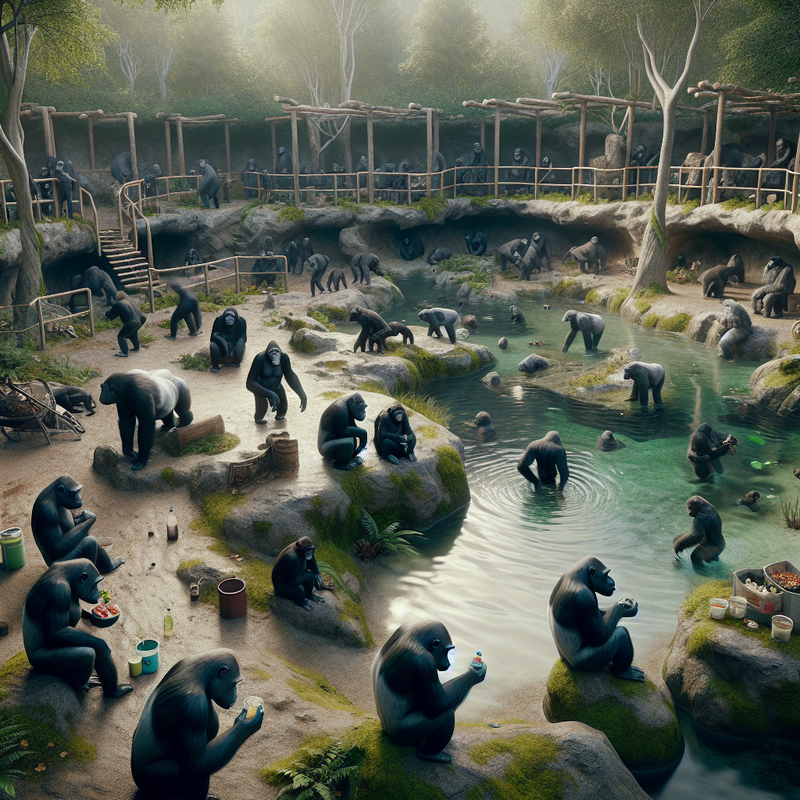Recent research has shed light on the behavioral adaptations in zoo-dwelling fauna, particularly primates, amidst the global health crisis wreaked by COVID-19. The study, undertaken in 2022, indicated significant alterations in the conduct of these animals in response to the decreased human presence within their habitats.
The inquiry targeted specific primate species—bonobos, chimpanzees, western lowland gorillas, and olive baboons—and capitalized on the unique circumstances of prolonged zoo closures to monitor behavioral variations, including altered patterns in rest and nutrition. Samantha Ward of Nottingham Trent University, UK, remarked on the complex dynamics between these intellectually sophisticated creatures and zoo visitors.
Conducted at the Twycross Zoo and Knowsley Safari in the UK, the investigative team compared behaviors recorded pre-pandemic to those after the re-admission of the public. Noteworthy observations included primates exhibiting reduced solitary behavior; chimpanzees engaged more with their habitats and showed heightened food interest with visitor reappearance; whereas, olive baboons at the safari park demonstrated a reduction in sexual and dominance activities, showing heightened curiosity towards visitor vehicles instead.
Evaluating the Behavioral Shifts and Their Implications
The question of whether these behavioral alterations are beneficial remains open for exploration. Some shifts, such as the increased sociability among bonobos and gorillas, seem advantageous. Yet, there is concern regarding gorillas, typically less active animals, and the possibility of adverse effects stemming from lessened rest periods.
Harper Adams University’s Ellen Williams
She attested to the primates’ capacity to adapt, noting that the behavioral and enclosure use variation with visitors underscores their resilience. The study also indicated a noticeable threshold at which visitor numbers begin to impact animal behavior, particularly in olive baboons.
The insights gleaned from this study are critical for animal care and the running of zoos, highlighting the necessity of taking visitor effects into account within habitat design and regulations. Although lockdowns have since ceased, the research group plans to continue their inquiries, looking to include a broader range of species in their future assessments.
The comprehensive findings are cataloged in the scientific publication Animals, with a preliminary draft released in September 2022.







